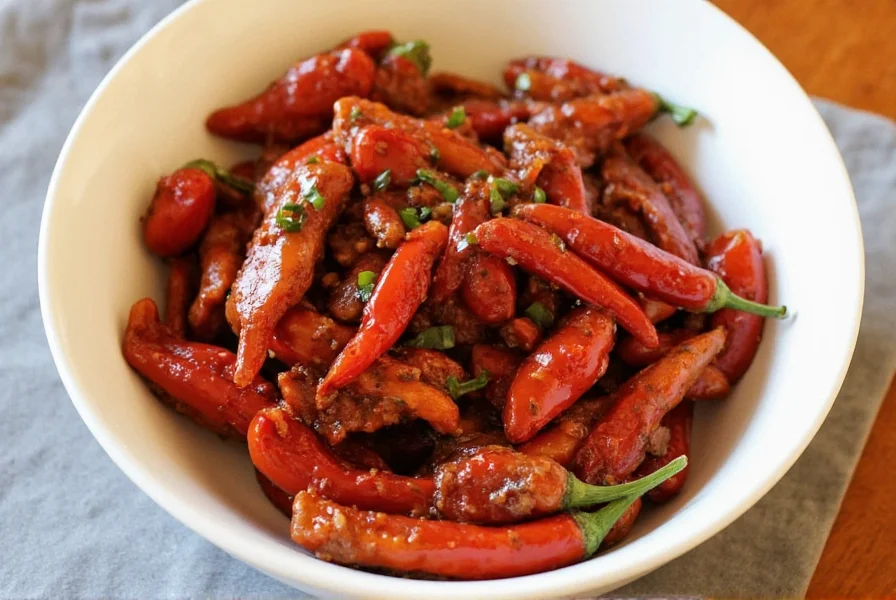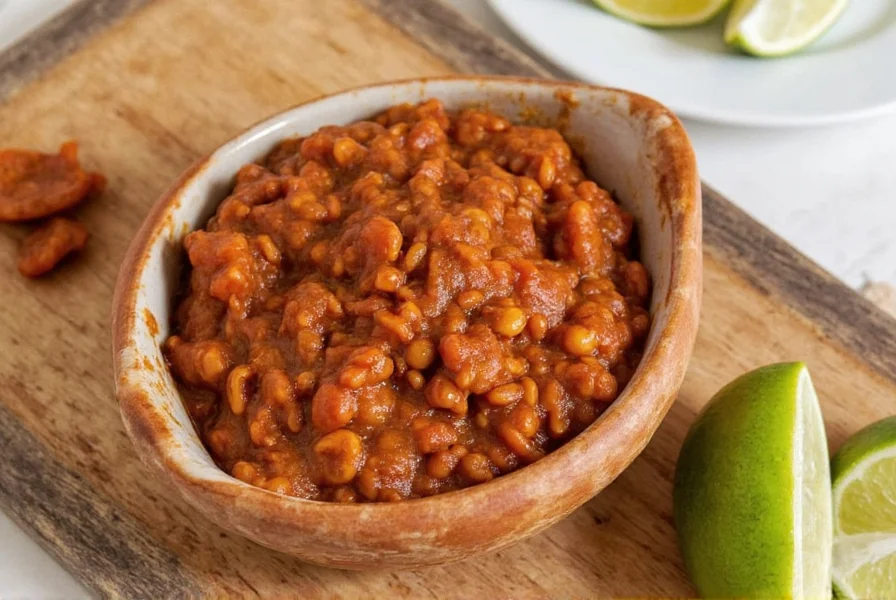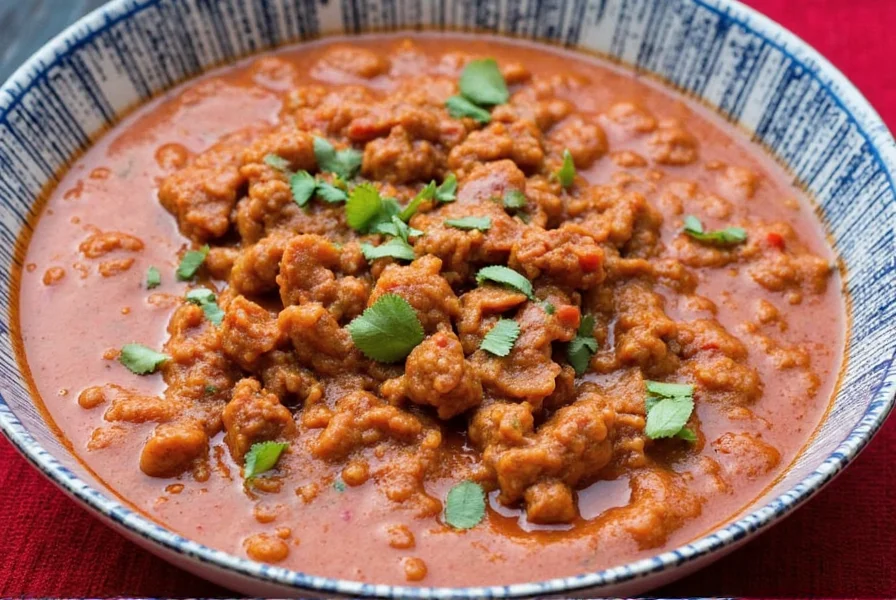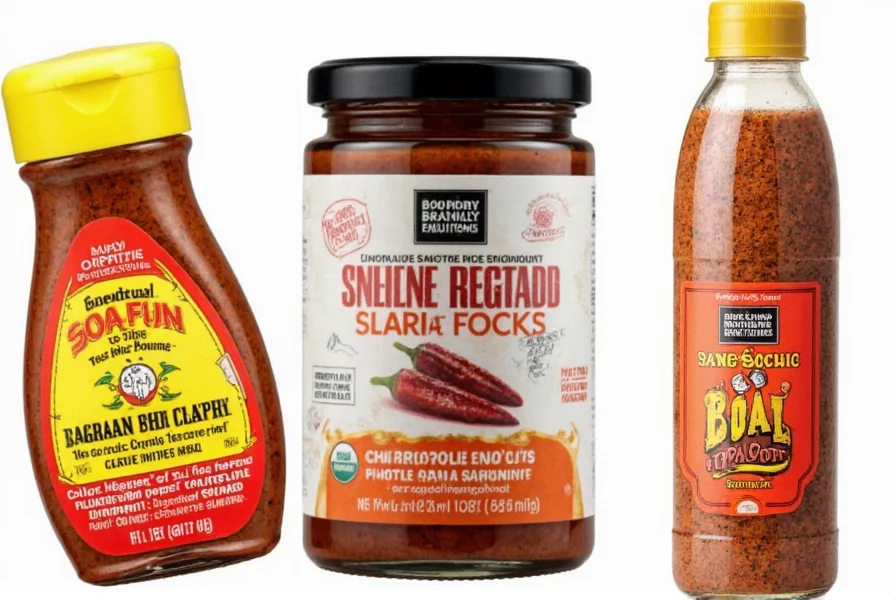Table of Contents
Introduction: Why Substitute Chipotle?
When you need a chipotle pepper substitute, these 7 options deliver the perfect smoky flavor for any recipe. Whether you're out of canned chipotles or want milder heat, each substitute is rated for heat level, flavor profile, and best cooking applications to ensure you never compromise on taste.

Chipotle peppers add signature smokiness to Tex-Mex dishes, but when they're unavailable, these proven alternatives maintain depth and complexity without missing a beat.
What Exactly is a Chipotle Pepper?
Chipotle (pronounced chi-POAT-lay) is a smoke-dried jalapeño pepper originating from Mexico. With 5,000–10,000 Scoville units, it offers medium heat combined with deep smoky, earthy notes. Canned chipotles in adobo sauce (tomato-based vinegar sauce) enhance their complexity, making them essential for salsas, marinades, and stews.

Top 7 Chipotle Pepper Substitutes
Each substitute is carefully evaluated for heat, flavor, and recipe compatibility. Use these exact ratios for seamless swaps:
1. Smoked Paprika + Cayenne Pepper
Flavor Profile: Sweet-smoky (paprika) + heat (cayenne).
- Mix 1 tsp smoked paprika + ½ tsp cayenne for every chipotle pepper called for.
- Best for: Dry rubs, soups, and sauces where a paste isn't needed.
- Tip: Add a splash of lime juice or vinegar to mimic adobo tanginess.
2. Ancho Chili Powder
Flavor Profile: Mild, sweet, and earthy with subtle smokiness.
- Use 1 tsp ancho chili powder in place of 1 chipotle pepper.
- Great for: Mole sauces, braises, and mild chili blends.
- Note: Lacks heat, so combine with cayenne if spiciness is key.
3. Guajillo Chiles (Dried)
Flavor Profile: Tangy, berry-like, and moderately hot.
- Soak and blend into a paste or puree for use in sauces.
- Use 1 guajillo chile per 1 chipotle pepper substitution.
- Ideal for: Traditional Mexican dishes like enchilada sauces or tacos al pastor.
4. Dried Morita Chile
Flavor Profile: Very similar to chipotle—smoky and slightly fruity.
- Use 1 dried morita chile per 1 chipotle pepper.
- Best for: Authentic Mexican recipes or when a deep, smoky flavor is non-negotiable.
- Pro Tip: Rehydrate in hot water or toast before using for more depth.
5. Harissa Paste

Flavor Profile: Spicy, smoky, garlicky, and North African-inspired.
- Use ½ tsp harissa paste per 1 chipotle pepper.
- Works well in: Stews, grain bowls, roasted veggies, or as a sandwich spread.
- Warning: May introduce Mediterranean notes—good if you like fusion flavors!
6. Liquid Smoke + Hot Sauce
Flavor Profile: Artificial smokiness with adjustable heat.
- Mix ¼ tsp liquid smoke + 1 tsp hot sauce (like Tabasco or Frank's) for each chipotle.
- Perfect for: Quick fixes or last-minute substitutions.
- Chef's Note: Use sparingly—it's easy to overdo the smoky effect.
7. Chipotle Chili Powder
Flavor Profile: Ground chipotle peppers—essentially concentrated chipotle flavor.
- Use ½ tsp chipotle chili powder in place of 1 whole chipotle pepper.
- Best for: Marinades, dry rubs, and seasoning mixes.
- Caution: Much stronger than fresh or canned chipotles.
Substitution Summary Table
| Substitute | Flavor Profile | Heat Level | Best For |
|---|---|---|---|
| Smoked Paprika + Cayenne | Sweet, smoky, spicy | Moderate | Dry rubs, stews, sauces |
| Ancho Chili Powder | Earthy, sweet, smoky | Mild | Mole, slow-cooked dishes |
| Guajillo Chiles | Tangy, berry-like, spicy | Moderate | Mexican sauces, marinades |
| Morita Chiles | Smoky, fruity, robust | Moderate | Authentic Mexican dishes |
| Harissa Paste | Garlicky, smoky, spicy | High | Stews, spreads, fusion recipes |
| Liquid Smoke + Hot Sauce | Artificial smoky, customizable heat | Adjustable | Last-minute fixes |
| Chipotle Chili Powder | Concentrated chipotle flavor | Strong | Rubs, seasonings, spice blends |
Buying Guide: How to Choose the Right Substitute
Selecting the right chipotle pepper substitute depends on several factors. Let's dive into what to look for based on your recipe needs and personal preferences.
1. Heat Level
Chipotle peppers range from 5,000–10,000 Scoville Heat Units. Match these substitutes to your desired heat:
- Moderate Heat: Guajillo, Morita, Smoked Paprika + Cayenne
- Higher Heat: Harissa paste, chipotle chili powder
- Mild Alternatives: Ancho chili powder, liquid smoke + low heat sauce
2. Flavor Requirements
Chipotles offer a unique balance of smokiness and spice. To match that:
- For Smokiness: Smoked paprika, morita chiles, liquid smoke
- For Earthiness: Ancho, guajillo
- For Complexity: Harissa paste, chipotle chili powder
3. Recipe Type
| Recipe Type | Recommended Substitute |
|---|---|
| Dry Rubs | Smoked paprika + cayenne, chipotle chili powder |
| Marinades | Harissa paste, morita chiles |
| Sauces & Purees | Guajillo, ancho, morita |
| Braises & Slow-Cooked Dishes | Any ground option + adobo-style vinegar |
| Quick Fixes | Liquid smoke + hot sauce |
4. Availability
Consider these accessibility tiers:
- Easily Found: Smoked paprika, cayenne, hot sauce
- Moderately Available: Harissa paste, liquid smoke
- Specialty Items: Guajillo, morita, chipotle chili powder
Frequently Asked Questions
Can I make my own chipotle substitute at home?
Absolutely! Mix smoked paprika with a pinch of cayenne and a drop of vinegar or citrus juice to mimic the tang of adobo sauce. Toasting dried chilies before grinding them into powder also boosts flavor intensity. For a more authentic texture, blend soaked dried chilies with a bit of tomato paste, garlic, and vinegar to create a homemade adobo-style sauce.
Are chipotle chili powder and ground chipotle the same thing?
Yes and no. "Chipotle chili powder" can refer to either pure ground chipotle peppers or a spice blend. Check the label to ensure it's mostly chipotle without too many fillers. Pure chipotle powder is significantly hotter and smokier than blends that contain other chili peppers and spices. For best results in substitution, look for 100% chipotle powder when possible.
How do I store chipotle substitutes?
- Ground spices: Keep in airtight containers away from sunlight for up to 1 year.
- Pastes: Refrigerate after opening and use within 6 months.
- Dried chilies: Store in sealed bags or jars in a cool, dark place for 6–12 months.
- For maximum freshness, you can freeze dried chilies for up to 2 years. To test if your spices have gone bad, rub a small amount between your fingers—if it doesn't release a strong aroma, it's time to replace them.
Is there a non-spicy chipotle alternative?
If you love the smokiness but not the heat, try a combination of smoked paprika and a little molasses or tomato paste for sweetness and depth. For recipes that need texture similar to canned chipotles, blend soaked dried mushrooms with smoked paprika to create a meaty, smoky alternative without the heat. This works particularly well in vegetarian or vegan recipes where you want that deep umami flavor.
How does chipotle compare to regular jalapeños in heat and flavor?
Chipotles are smoke-dried jalapeños, which gives them a completely different flavor profile. While fresh jalapeños have bright, vegetal notes and range from 2,500-8,000 Scoville units, chipotles have a deep smokiness with earthy, leathery notes and measure 5,000-10,000 Scoville units. The drying process concentrates both the heat and develops complex flavors you won't find in fresh jalapeños. The smokiness of chipotles adds a dimension that fresh jalapeños simply can't replicate in cooked dishes.
Can I use regular paprika instead of smoked paprika as a substitute?
You can, but you'll lose the essential smoky component that makes chipotle substitutes work. Regular paprika provides color and mild pepper flavor but lacks the critical smokiness. If you must use regular paprika, add 1/8 teaspoon of liquid smoke per teaspoon of paprika to approximate the smoky dimension. Better yet, toast the paprika lightly in a dry pan first to develop some depth, though this won't fully replicate true smoked paprika. For best results, seek out smoked paprika—it's widely available and makes all the difference in chipotle substitutions.
What's the difference between chipotle in adobo and chipotle powder?
Chipotles in adobo are whole smoke-dried jalapeños rehydrated and canned in a tangy, tomato-based sauce with spices. They offer complex texture and layered flavors with vinegar notes. Chipotle powder is simply dried, ground chipotle peppers with no additional ingredients. The canned version provides moisture and sauce elements to recipes, while the powder is more concentrated (use 1/2 tsp powder for each pepper) and works better in dry rubs. When substituting powder for canned, remember to add moisture and acidity to balance the recipe.
How can I adjust recipes when using substitutes to get the best flavor?
When substituting, consider both flavor and texture elements you're replacing:
- For canned chipotles: Add a small amount of vinegar or citrus to mimic adobo sauce's tang
- For heat control: Start with less spice than recipe calls for, then adjust to taste
- For smokiness: If using liquid smoke, remember a little goes a long way (start with 1/8 tsp)
- For texture: Puree dried chilies thoroughly to avoid gritty results
- For balance: Add a pinch of sugar to counter excessive acidity when mimicking adobo
- For depth: Let substitutes simmer in your dish for at least 15 minutes to allow flavors to meld
Conclusion: Keep It Smoky, Keep It Simple
Finding the perfect chipotle pepper substitute doesn't have to be complicated—or expensive. Whether you're reaching for a pantry staple or picking up a specialty item, you now have a clear roadmap to maintain that beloved smoky depth in your cooking.
From smoky paprika blends to fiery harissa pastes, each option brings its own personality to the table. So next time your chipotle stash runs dry, just reach for one of these flavorful stand-ins and keep the heat—and the flavor—going strong.
Now go ahead, fire up that grill or simmer pot, and let the smoky magic happen!











 浙公网安备
33010002000092号
浙公网安备
33010002000092号 浙B2-20120091-4
浙B2-20120091-4